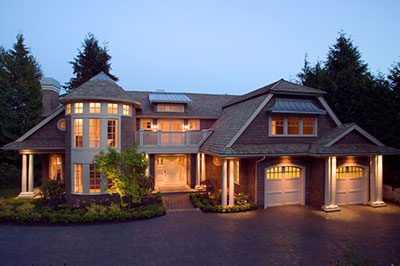
What is covered by standard homeowners insurance?
Understanding the four essential protections provided by your homeowners policy
Homeowners coverage provides financial protection against loss due to disasters, theft and accidents. Most standard policies include four essential types of coverage: Coverage for the structure of your home; Coverage for your personal belongings; Liability protection; Coverage for Additional Living Expenses
Coverage for the structure of your home
Your homeowners policy pays to repair or rebuild your home if it is damaged or destroyed by fire, hurricane, hail, lightning or other disasters listed in your policy. Most policies also cover detached structures such as a garage, tool shed or gazebo—generally for about 10 percent of the amount of insurance you have on the structure of the house.
A standard policy will not pay for damage caused by a flood, earthquake or routine wear and tear.
When purchasing coverage for the structure of your home, remember this simple guideline: Purchase enough coverage to rebuild your home.
Coverage for your personal belongings
Your furniture, clothes, sports equipment and other personal items are covered if they are stolen or destroyed by fire, hurricane or other insured disasters. The coverage is generally 50 to 70 percent of the insurance you have on the structure of the house.
The best way to determine if this is enough coverage is to conduct a home inventory.
Personal belongings coverage includes items stored off-premises—this means you are covered anywhere in the world. Some companies limit the amount to 10 percent of the amount of insurance you have for your possessions. You also have up to $500 of coverage for unauthorized use of your credit cards.
Expensive items like jewelry, furs, art, collectibles and silverware are covered, but there are usually dollar limits if they are stolen. To insure these items to their full value, purchase a special personal property endorsement or floater and insure the item for its officially appraised value.
Trees, plants and shrubs are also covered under standard homeowners insurance—generally for about $500 per item. Trees and plants are not covered for disease, or if they have been poorly maintained.
Liability protection
Liability covers you against lawsuits for bodily injury or property damage that you or family members cause to other people. It also pays for damage caused by your pets. So, if your son, daughter (or even your dog) accidentally ruins a neighbor’s expensive rug, you are covered. (However, if they destroy your rug, you’re out of luck.)
The liability portion of your policy pays for both the cost of defending you in court and any court awards—up to the limit stated in your policy documents.
Liability limits generally start at about $100,000, however, it’s a good idea to discuss whether you should purchase a higher level of protection with your insurance professional. If you have significant assets and want more coverage than is available under your homeowners policy, consider purchasing an umbrella or excess liability policy, which provides broader coverage and higher liability limits.
Your policy also provides no-fault medical coverage, so if a friend or neighbor is injured in your home, he or she can simply submit medical bills to your insurance company. This way, expenses can be paid without a liability claim being filed against you. It does not, however, pay the medical bills for your own family or your pet.
Additional living expenses (ALE)
ALE pays the additional costs of living away from home if you cannot live there due to damage from a an insured disaster. It covers hotel bills, restaurant meals and other costs, over and above your usual living expenses, incurred while your home is being rebuilt.
Keep in mind that the ALE coverage in your homeowners policy has limits—and some policies include a time limitation. However, these limits are separate from the amount available to rebuild or repair your home. Even if you use up your ALE your insurance company will still pay the full cost of rebuilding your home up to the policy limit.
If you rent out part of your house, ALE also covers you for the rent that you would have collected from your tenant if your home had not been destroyed.
For more information on your home insurance or to get a quote contact us today (877)277-9036
Source: iii.org
Categories: Blog

